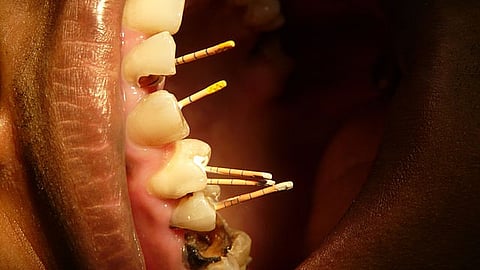Diagnosis and treatment plan:
The most common cause of pain in older individuals is a pulpal or periapical issue that requires root canal treatment or extraction. Patient must be asked about the stimulus, or irritant that causes pain. The nature of the pain (radiating/localized) must be asked. This information helps determine whether the source is pulpal or periapical.
From the past dental history, the patient’s knowledge about the dental treatment can be assessed. The psychological attitude and expectations of the patient can be understood.
As patients are in an old-age group, they should be asked whether they are taking any medications or undergoing any therapy. Aging can result in respiratory, central nervous system, and cardiovascular changes. The renal and liver functions of the patients should be considered while prescribing the drugs.
Extraoral and intraoral examinations must be conducted to get useful information regarding the disease and previous treatment done. Mostly, older individuals are affected with:
- Missing teeth
- Gingival recession
- Root caries
- Reduced mouth opening
- Continued cementum deposition
Pulp Vitality Tests: Cold tests, heat tests, electric pulp tests, and test cavities help assess the pulp. These tests are not fully accurate due to extensive calcification and reduced size of the pulp cavity.
Radiographs: Radiographs help in identifying the status of the tooth and plan the treatment accordingly. The following problems are encountered while taking the radiographs:
- Presence of exostoses, tori, and denser bone requires increased exposure time for proper diagnosis.
- Older individuals might be less capable of holding the film in an accurate position
The main aim of the treatment is the removal of the pain and infection
It is safe to obtain valid consent for medically compromised patients
Morning appointments are preferable
Single appointment procedures are preferred as these patients might have physical problems
Isolation: Rubber dam serves as the best method of isolation
Access to canal orifice: Radiographs help in the determination of canal position, axial inclination of root & crown, root curvature, and extent of the lesion
- Nickel-Titanium files no rake angle is preferred for cleaning and shaping
- Identifying apical constriction can be challenging in older patients due to decreased periapical sensitivity.


